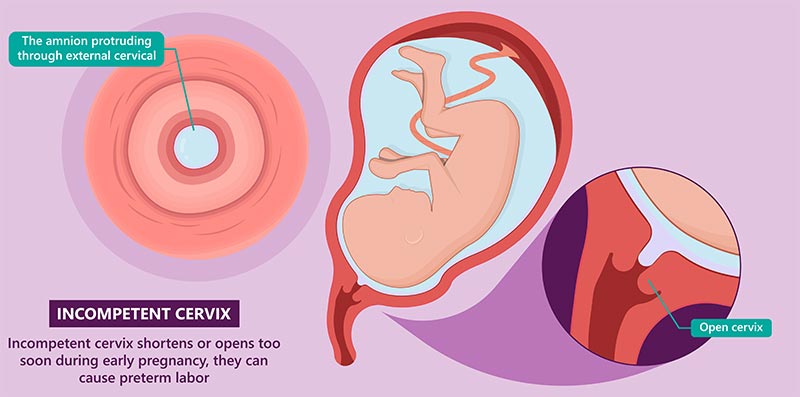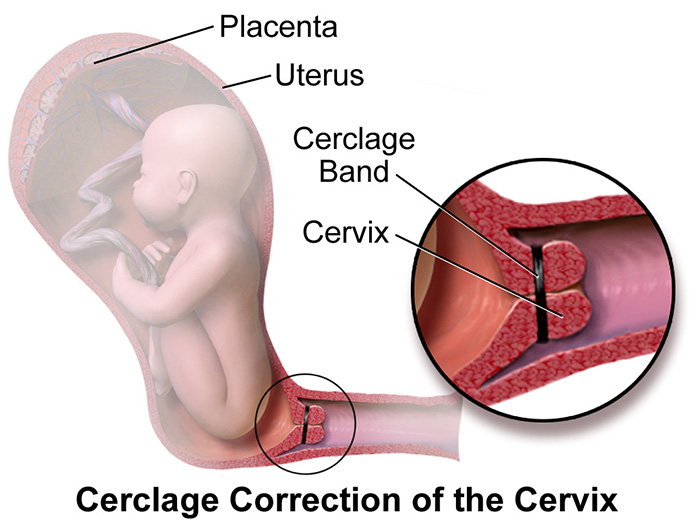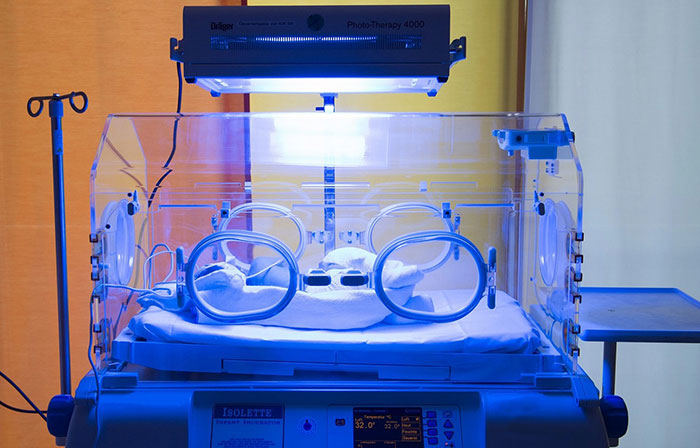What is Betamethasone?
Betamethasone is a type of antenatal corticosteroid therapy that can be used to treat inflammation, allergic reactions, or various skin conditions, such as itching, swollen, or irritated skin. The administration of Betamethasone to pregnant women at risk of preterm birth can reduce the risk of premature infant mortality and morbidity by promoting lung maturation in the developing fetus. Steroid shots are often recommended for pregnant women who have been admitted to the hospital for conditions that may result in preterm labor, such as preterm premature rupture of membranes (PPROM), cholestasis of pregnancy, or early preeclampsia.

Treatment to delay delivery is typically recommended whenever a woman goes into labor prematurely. A few different medications can be used to delay labor and reduce the risk of fetal complications, such as magnesium sulfate, tocolytics, and Betamethasone. Betamethasone is a type of antenatal steroid that can be given to women at risk of premature birth.
When a premature baby is born, they often have trouble breathing because their lungs are often not fully developed and may lack surfactant, a substance that helps the lungs expand and contract properly. A premature baby's underdeveloped organs (most commonly their lungs) can make them especially susceptible to health complications and lead to an increased risk of breathing difficulties, developmental delays, and vision and hearing problems. This treatment increases lung development reducing birth complications associated with premature births.

If you suspect that your child's birth injury may have been caused by a medical professional's failure to prevent or manage your preterm birth, you should speak to an experienced medical malpractice attorney who can guide you through the legal process and determine if you have a valid claim. At Miller Weisbrod Olesky, our skilled and compassionate birth injury lawyers understand the emotional toll birth injuries can have on families, which is why we are dedicated to working tirelessly to secure the justice and compensation you and your child deserve.
Birth Injury Lawyers
1-888-987-0005The birth injury attorneys at Miller Weisbrod Olesky are dedicated to providing compassionate legal support to families and their children living with a brain injury or birth injury, such as cerebral palsy.
What is Betamethasone Used For?
Betamethasone is commonly used to treat various conditions, such as skin inflammation, certain skin conditions that cause itchiness, certain autoimmune diseases, and respiratory conditions. In pregnancy, it is typically prescribed to prevent complications in preterm births, such as preventing respiratory distress syndrome and reducing the risk of intracranial hemorrhage in infants. When a woman is at risk of preterm birth, it is essential for her healthcare provider to assess the individual's specific circumstances and weigh the potential benefits of preventing complications against any potential side effects or risks associated with the medication.

Treating Premature Birth
When a woman goes into premature labor, she may be placed on bed rest and receive intravenous (IV) fluids to help support the health and development of the baby until labor can be safely delayed or managed. In cases where infection that can cause preterm labor is suspected, antibiotics may be administered to combat the infection and prevent it from spreading to the baby. Medicine such as Tocolytics may be given to a pregnant mother to delay or prevent preterm labor, allowing the baby more time to develop in the womb. Brain injuries and birth defects are less likely to occur when a baby stays in the mother's uterus for a longer period of time.
A baby's lungs do not mature until around the 32nd to 34th week of gestation. Any delivery that happens before 32 weeks can cause the newborn to suffer from hypoxia or a lack of oxygen to the brain, which can lead to permanent brain damage or cerebral palsy. In cases where premature birth is imminent, a doctor may prescribe steroid injections such as Betamethasone to help mature a baby's lungs. These injections can help the baby breathe more easily by reducing inflammation in the lungs. Medical professionals should explore all available options and interventions to reduce the risk of complications associated with preterm birth.
Causes of Preterm Birth
The average full-term pregnancy usually lasts about 40 weeks, from the first day of a woman's last menstrual period to her due date (commonly called the “gestational period”). Preterm labor is labor that begins before 37 weeks of gestation. Labor that starts too early is the most common complication of pregnancy in the second trimester and the cause of more than a third of newborn deaths.
When a pregnant woman is experiencing symptoms of preterm labor such as frequent contractions, mild cramps in the abdomen, or watery vaginal discharge, they should seek medical attention immediately. Prenatal care and monitoring can help to detect any complications that may lead to early delivery and reduce the risk of birth injuries. Early detection and treatment can also help to prevent long-term health risks, such as cognitive impairments, developmental delays, and physical disabilities.

Premature births can be caused by a variety of factors, including:
- Previous preterm labor or delivery
- Uterine infection (i.e., bacterial vaginosis or cervicitis)
- Chorioamnionitis
- Bicornate (heart-shaped) uterus
- Uterine scarring following pregnancy complications
- Cervical insufficiency
- Preeclampsia
- Placental abruption or previa
- Chronic health conditions (heart disease or diabetes)
- Multiple gestations (twins, triplets, or more)
- Maternal age (a mother who is under 18 or over 30)
Reducing the risk of birth injuries and long-term health complications starts with identifying the underlying causes of preterm labor. Healthcare professionals have a responsibility to provide appropriate prenatal care and closely monitor high-risk pregnancies to identify and promptly address any risk factors that may contribute to preterm birth.
If a healthcare professional neglects to observe signs of premature labor or provide appropriate care, it can result in serious consequences for both the mother and the baby. A birth injury lawyer can help families determine the cause of their child's birth injury and whether medical malpractice or negligence played a role.
Is Betamethasone Safe During Pregnancy
The safety of betamethasone during pregnancy is a topic of concern for many expectant mothers. While betamethasone is commonly used to treat certain medical conditions, such as preterm labor, it is important to understand the potential risks and benefits associated with its use during pregnancy. When used as directed by a healthcare professional, studies have shown that betamethasone is generally considered safe for pregnant women. However, like any medication, betamethasone should be used with caution to ensure the safest possible outcome for both you and your baby.

Benefits of Betamethasone for Preterm Labor
In preterm labor, steroids such as Betamethasone or dexamethasone can help speed up the development of a baby's lungs and significantly increase their chances of survival by increasing the production of surfactants that help the baby's lungs expand and function properly.
Surfactant is a mixture of fats and proteins, normally produced by lung tissue in the third trimester, that lubricates the lungs and allows the air sacs to slide against one another without sticking when the infant breathes.
Babies born full-term produce enough surfactant to breathe without assistance, but this is often not the case for premature infants. Antenatal Betamethasone can help mitigate this issue by stimulating the synthesis and release of surfactant in the lungs of preterm fetuses.
The use of antenatal Betamethasone significantly reduces the risk of:
- Bleeding in the brain (intracranial hemorrhage)
- Necrotizing Enterocolitis (NEC)
- Respiratory distress syndrome (RDS)
- Neonatal mortality (by about 31%)

Additionally, this medication reduces the risk of lifelong disabilities:
- Cerebral Palsy (CP)
- Hypoxic-ischemic encephalopathy (HIE)
- Periventricular leukomalacia (PVL)
- Developmental disabilities
- Seizures
Preterm babies may also require artificially produced surfactant and breathing support from a ventilator in addition to Betamethasone. In some cases, premature infants may need to stay in the neonatal intensive care unit (NICU) for an extended period to receive ongoing medical care and monitoring until they are stable enough to breathe on their own and maintain their body temperature.
Risks of Betamethasone During Pregnancy
Research has found that betamethasone side effects are minimal when given late in pregnancy and in small doses. Although corticosteroids appear safe for moms and their babies, as with all medications, there is the potential for adverse reactions. Multiple courses of corticosteroids used to be given to women at high risk of delivering prematurely; however, some studies have found that more than two courses may have harmful effects, such as lower birth weights and reduced head circumference.
There is also some controversy on whether or not repeat courses of corticosteroids may be associated with adverse effects in infants, such as an increased risk of respiratory issues, infections, and neurodevelopmental disorders. Some women with gestational or pregestational diabetes shouldn't take Betamethasone, as it can make it more difficult to control their blood sugar levels and may increase the risk of complications during pregnancy. If you have specific questions or concerns about Betamethasone or other medications used for preterm labor, you should consult with your healthcare provider.
When Should Betamethasone be Given for Preterm Labor
Betamethasone is most effective when administered in a clinical setting where patients are at risk for preterm delivery between 2 to 7 days before the baby's birth. The American College of Obstetricians and Gynecologists (ACOG) has made the following recommendations for the safe use of Betamethasone.
- Women between 24 and 34 weeks of pregnancy who are at risk of giving birth within the next week should be given a single course of corticosteroids. This may also be recommended for women between 23-24 weeks of pregnancy and expectant mothers with multiple gestations or PROM (premature rupture of membranes).
- Women between 34 and 37 weeks of pregnancy who are at risk of giving birth within the next week and who have not received a previous course of antenatal corticosteroids should be given a single course of Betamethasone.
- Women at less than 34 weeks of gestation who are at risk of premature delivery within the next week should be given a second course of corticosteroids if 14 days have passed since the first course was given. In some cases, a physician may recommend a second course of Betamethasone 7 days after the first course was given.

When used for women at risk of early labor, Betamethasone is given intramuscularly in two 12 milligrams (mg) doses administered 24 hours apart. Betamethasone can be given to the baby in utero by injecting a precise dose into the mother's arms, legs, or buttocks. From there, the medication travels through the mother's bloodstream and eventually reaches the baby.
Once it circulates through the baby's bloodstream, it helps to mature the baby's lungs and prepare them for life outside the womb. More than two courses (serial courses) or regularly scheduled repeat courses of the medication are currently not recommended. Following exposure to corticosteroids, the medical team should closely monitor the mother and her baby to ensure any potential side effects or complications are promptly addressed and managed.
Other Treatments to Prevent Preterm Births
Aside from Betamethasone, there are other interventions that doctors may recommend to prevent complications from preterm delivery. Preventing preterm birth can significantly reduce the risk of long-term health complications for the baby, such as respiratory distress syndrome, cerebral palsy, developmental delays, and vision or hearing problems. Furthermore, preventing premature delivery can reduce the risk of maternal complications, like infection, postpartum hemorrhage, and preeclampsia.
A doctor might recommend the following interventions in addition to or instead of Betamethasone:
- Cervical cerclage (for women with incompetent cervix)
- Progesterone therapy
- Medications to stop contractions (Tocolytics (Nifedipine and Indomethacin))
- Antenatal magnesium sulfate (to protect the developing fetal brain)

When a baby is born prematurely, it is common for them to be cared for in the neonatal intensive care unit (NICU) and undergo some testing to rule out any potential health problems and ensure their organs are maturing properly.
Some of these tests include:
- Cardiorespiratory monitoring (keeps track of the baby's breathing and heart rate)
- Blood tests (to look for signs of certain health conditions)
- Measuring fluid input/output (tracks how much fluid the baby takes in through feeding and IV fluids and loses through diapers that are wet or soiled)
- Ultrasound (to check the brain for bleeding or fluid buildup)
- Echocardiography (to look for problems with the baby's heart function)
- Eye exam (a pediatric ophthalmologist will screen and check the baby for signs of retinopathy of prematurity (ROP))
Various treatments can be administered to support healthy outcomes for a premature baby based on their needs:
- Incubators (help control the baby's temperature and provide them with the environmental conditions they require to heal and thrive)
- Nasogastric or Orogastric feeding tubes (used to provide fluids and nutrients to babies that are not strong enough to breastfeed or bottle feed)
- Phototherapy (can reduce the amount of bilirubin in a baby's blood and treat newborn jaundice with bright blue lights called bilirubin lights that are placed over the baby's incubator)
- Blood transfusions (preterm babies may be given a red blood cell transfusion to treat acute blood loss before delivery or symptoms caused by anemia, such as apnea or bradycardia)
- Surfactant therapy (is administered to newborn infants who have underdeveloped lungs and are at risk of developing respiratory distress syndrome (RDS))
- Ventilatory and respiratory support (continuous positive airway pressure (CPAP) can help premature babies breathe by providing a steady flow of air with oxygen to help the lungs do their job on their own) or (mechanical ventilator that temporarily breathes for the premature baby until their lungs mature enough to breathe on their own)

Treatment will be prescribed by a healthcare provider based on the mother and baby's needs and an assessment of their condition. Healthcare providers are responsible for doing everything possible, including using Betamethasone as a preventative measure to prevent premature birth.
Injuries that are caused by a physician's failure to properly handle or prevent premature birth can result in long-term health complications that can place a significant financial burden on the affected individual and their families. If you or your newborn sustained injuries due to the careless or negligent actions of a medical professional, you should consult with an experienced birth injury lawyer who can fight for the compensation you and your family deserve.
Leading Causes of Birth Injury Malpractice
When doctors, nurses, or other healthcare professionals commit medical negligence before, during, or after delivery, it can result in injuries to a mother, her child, or both. Even though not every birth injury is caused by medical malpractice, an experienced birth injury attorney can help make sure your child is compensated fairly if their provider was negligent in their care.

There are several examples of acts of medical negligence that can cause birth injuries during childbirth:
- Failure to recognize and treat signs of maternal or fetal distress, such as lack of oxygen
- Improper use of forceps or a vacuum extractor
- Using too much force during delivery
- Failure to schedule an emergency cesarean section (C-section)
- Delaying in performing an emergency C-section
- Failure to properly monitor the mother during her pregnancy
- Failure to administer the proper antibiotics or administering the wrong antibiotics to a mother with an STD or other maternal infections before delivery
- Ignoring or misreading a fetal monitoring strip
- Failure to detect and treat an umbilical cord complication
- Failure to diagnose and treat preterm labor in a timely manner
- Failure to treat maternal elevated blood pressure (preeclampsia)
- Failure to properly resuscitate a newborn after delivery
- Failure to treat jaundice and kernicterus
- Failure to respond to signs of a placental abruption
- Failure to detect a severe birth defect on a prenatal ultrasound
- Failure to carefully manage an abnormal fetal position
- Administering too high a dose of labor-inducing medications like Pitocin
Failing to address complications such as a preterm delivery or umbilical cord issues can result in a serious birth injury. As leaders in our communities, we rely on medical professionals to provide high-quality health care. Generally, when people think of medical malpractice liability, they picture doctors and nurses. However, other parties involved in the care of a pregnant woman and her baby may also be held responsible in a birth injury lawsuit.

Medical negligence may be committed by one or more of the following types of medical providers or facilities:
- Obstetricians (OB-GYN)
- Other obstetric professionals
- Pediatricians, including pediatric neurologists
- Anesthesiologists
- Labor and delivery nurses
- Midwives
- Nurses
- Hospitals and medical facilities
- Hospital administrators
- Other hospital staff
- Neonatal nurses and aids
- Neonatologists or pediatricians providing neonatal care
- Respiratory therapists
- Maternal-fetal medicine physicians and specialists (MFM)
- Laboratory staff
Although medical malpractice suits are often filed against healthcare providers like doctors and nurses, hospitals can also be held liable in certain circumstances. A hospital can be vicariously liable for an employee's negligent actions that caused harm during work hours or while the employee was performing a job-related task. For example, if an OBGYN makes a negligent mistake during pregnancy or delivery, the hospital can be held vicariously liable.
A hospital may also be held directly liable for its own actions. For instance, a hospital failing to adhere to medical protocols and standards may be directly liable for a patient's injuries. We can help you determine whether your child's birth injury was caused by a doctor, the hospital itself, or another medical professional.
When you file a birth injury malpractice claim, your lawyer must be prepared to present evidence that proves that a doctor's or hospital's negligence caused your child's birth injury. An injured plaintiff must be able to prove each of the following four legal elements in their birth injury lawsuit.
- Duty of care: Before the provider will have a duty of care, the plaintiff must be able to establish a provider-patient relationship. Upon establishing this relationship, the medical provider is expected to meet a relevant standard of care that a medical professional with the same specialization would have exercised under the same conditions.
- Breach: The next element the plaintiff must prove is that the healthcare provider or facility breached that duty by failing to meet the applicable standard of care.
- Causation: The plaintiff must then demonstrate that the healthcare provider's negligent care directly caused their or their child's injuries.
- Damages: Finally, the plaintiff must show that the harm they or their child suffered resulted in specific expenses and other losses. These losses may include anything from the cost of lifelong medical care to emotional suffering.
The plaintiff's attorney must present compelling evidence to establish liability and recover damages in birth injury cases. At Miller Weisbrod Olesky, our birth injury lawyers can collect evidence on your behalf, consult with medical experts to determine the cause of the injury, and identify all medical professionals who contributed to you or your child's birth injury.
Filing a Birth Injury Malpractice Lawsuit

Parents may file a birth injury lawsuit on behalf of their child against negligent medical professionals responsible for causing their child to sustain a preventable birth injury. Families may seek compensation to cover their child's medical and treatment costs through a Birth Injury Malpractice lawsuit.
It is important to note that while every case is different, most lawsuits typically follow a similar process. If your child was injured by a doctor, nurse, or other healthcare provider, an experienced birth injury lawyer can file your case, gather evidence, and pursue full and fair compensation on your behalf.
Free Case Review
Our dedicated birth injury lawyers will determine if you are eligible to file a birth injury lawsuit during your complimentary case review, which you can schedule by contacting us via our toll-free line at 888-987-0005 or by filling out our convenient online form. If we can determine that medical malpractice may have played a role in your child's birth injury, your case will likely be accepted by our team.
Gather Evidence
A birth injury malpractice attorney will gather information and evidence related to your case as soon as they determine you qualify to pursue a lawsuit. Evidence like medical records, witness statements, and the employment history of the medical professional in your case are crucial to proving that your child's birth injury was caused by medical negligence.
File the Lawsuit
After gathering the necessary information, your attorney will file your lawsuit in the appropriate court. As soon as the case is filed, you and your family will become the plaintiffs (the party taking legal action). The healthcare professionals who may be responsible for causing your child's injury will become the defendants (the party being sued). The statute of limitations in each state governs the deadline for filing a birth injury lawsuit.
Your lawyer will ensure your case is filed on time according to your state's statute of limitations. The lawsuit outlines the charges against the defendants and gives them around 30 days to respond. If the defendants fail to respond, judgment will automatically be entered in the plaintiff's favor. In the event the defendants respond but fail to assume responsibility, they will explain why they believe they are not to blame for your child's injury.
Discovery
Your attorney will gather more evidence, such as medical records, medical expense reports, and other documents related to your case, once the defendants file their response. During this time, you, your loved ones, and medical experts may be required to give statements under oath. The parties will also exchange information and evidence relevant to their respective cases to build strong arguments. To prove that medical professionals failed to uphold a high standard of care, an experienced attorney will collect all legally required evidence.
Settlement Negotiations
Settlement negotiations can begin once both parties have prepared their cases. During this phase, both parties will try to reach an agreement (settlement) that allows them to resolve their dispute without going through a full trial. Should a settlement be reached, the defendants will pay you a lump sum, and all legal action will stop. If the case cannot be resolved during this stage, our lawyers have the experience and knowledge to represent your best interests in court.
Go Through a Trial
Cases that do not settle through settlement negotiations will go to trial. A jury and judge will examine all the evidence presented by both legal teams during the trial. A verdict is reached after each party has presented their case and a judgment has been entered. The losing party may decide to appeal the decision in some cases. The disadvantage of trials is that, while you might receive more compensation than you would receive from a settlement, you risk receiving no compensation at all if you lose. Our lawyers can help you obtain the compensation you need to cover the cost of your child's care and other injury-related expenses.
Birth Injury Malpractice Statute of Limitations

A statute of limitations is a law that imposes a deadline for filing birth injury lawsuits. If you fail to file a claim before the statute of limitations "runs out", you may lose your right to pursue legal action and seek compensation. In some cases where an injury may not be immediately apparent, the statute of limitations may be extended.
The discovery rule prevents the statute of limitations from running until the injury is discovered or reasonably should have been discovered. It is also important to remember that the statute of limitations varies by state and the type of claim you're filing. A birth injury attorney can help you avoid missing all crucial deadlines related to your case.
Discuss Your Case with One of Our Skilled Birth Injury Attorneys Today

Was Betamethasone not offered to you by your doctor to prevent complications associated with preterm labor? Did your baby suffer permanent injuries as a result? If you had a premature birth and your baby was harmed due to a medical professional's failure to provide quality care, you may be entitled to seek compensation through a medical malpractice lawsuit.
The compassionate birth injury attorneys at Miller Weisbrod Olesky have extensive experience handling
Our lawyers work on a contingency basis, meaning you won't have to pay any upfront fees for our legal services unless/until we successfully recover compensation in your case. Schedule your free, no-obligation case review by calling us toll-free at 888-987-0005 or by filling out our online request form.
